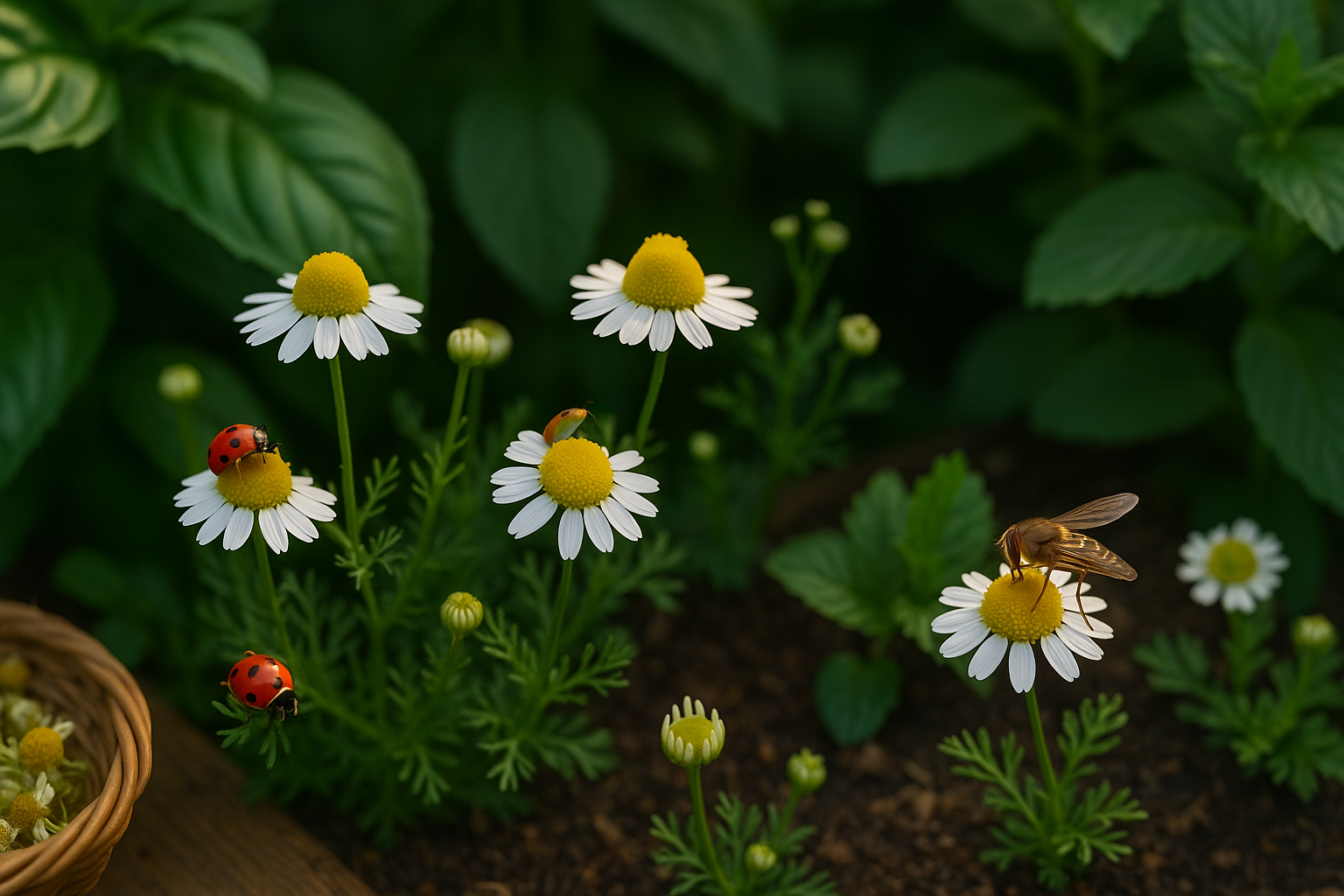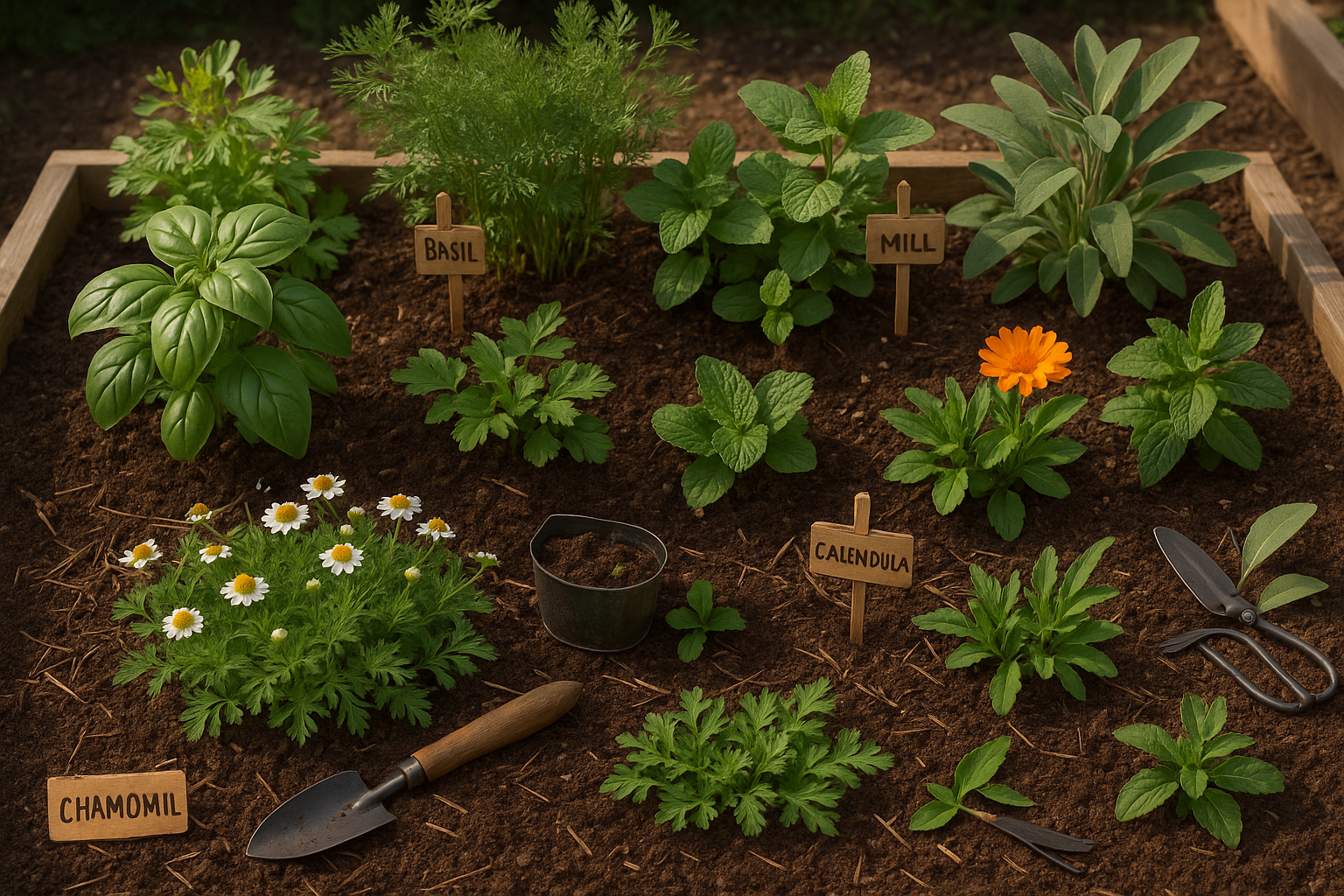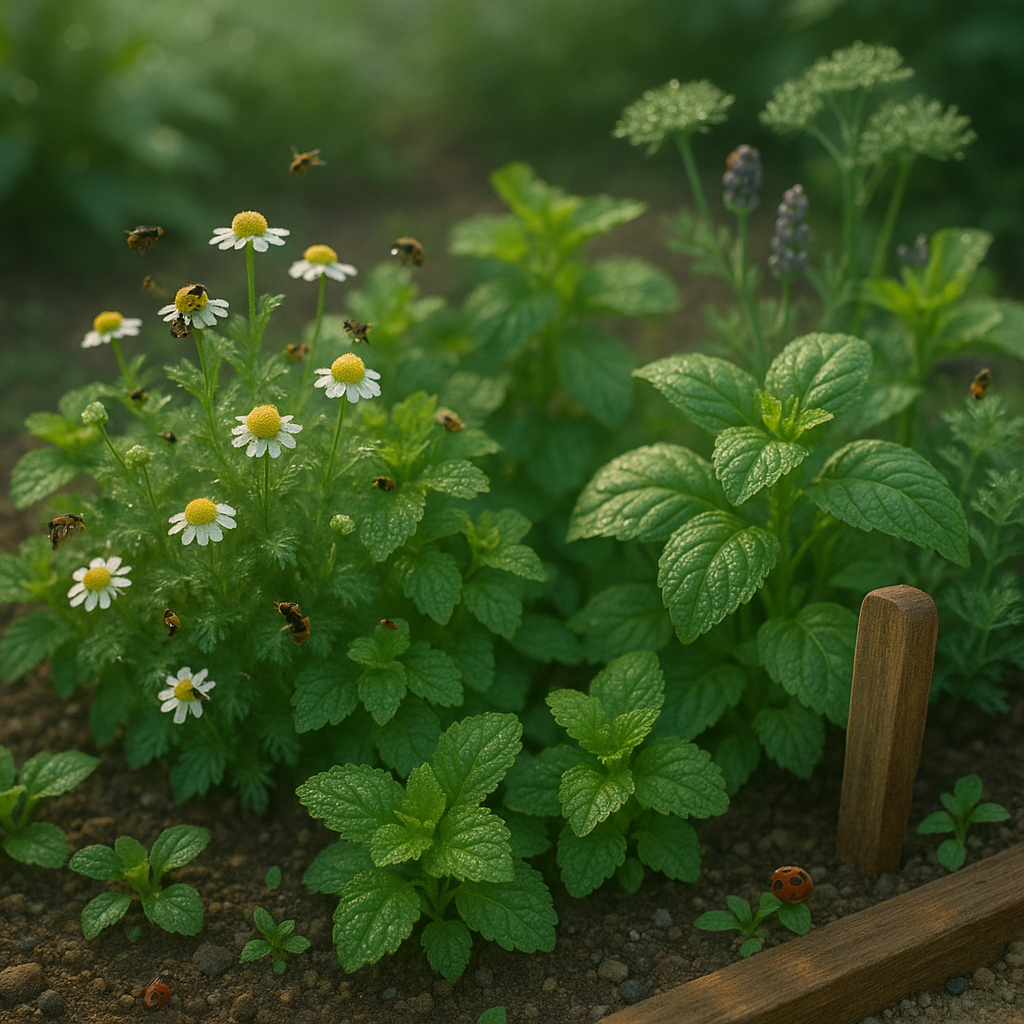Introduction to Companion Planting with Chamomile
If you’re searching for the best herbs to grow with chamomile, you’re in good company—chamomile is a beloved favorite among gardeners for its calming aroma, delicate flowers, and gentle, soothing tea. Beyond its uses in teas and home remedies, this versatile herb can also play a starring role in a healthy, productive herb garden through companion planting.
Companion planting is the practice of growing certain plants together so they can support each other’s growth, deter pests, and boost overall health. It’s a tried-and-true gardening technique that can lead to more robust plants, fewer pests, and even richer flavors.
Choosing the right herbs to grow alongside chamomile isn’t just about saving space; it’s about building a mini-ecosystem where each plant benefits from the others. For example, chamomile’s natural insect-repellent properties can help protect nearby herbs like basil or mint, while these companions can, in turn, enhance chamomile’s growth and flavor.
By carefully pairing chamomile with compatible companions, you set your garden up for success—a lush, fragrant space that’s as beautiful as it is useful. In this post, we’ll explore which herbs pair best with chamomile and how to make the most of companion planting for a thriving garden all season long.
What Makes Chamomile a Great Companion Plant?

Chamomile is a favorite among gardeners not just for its calming tea, but also for its remarkable qualities as a companion plant. One standout benefit is its natural ability to repel pests like aphids, thrips, and whiteflies, reducing the need for chemical sprays in the garden.
At the same time, chamomile’s delicate, daisy-like flowers act as a magnet for beneficial insects such as ladybugs and hoverflies that prey on common garden pests, creating a natural balance.
Another reason chamomile excels in mixed plantings is its adaptable, gentle growth habit. Unlike more aggressive spreaders, chamomile settles in gracefully between vegetables, herbs, and even flowers without choking out its neighbors or stealing resources.
In fact, many gardeners find chamomile helps improve the flavor and vitality of nearby plants—especially brassicas, onions, and even strawberries. There’s some evidence that its roots release subtle antimicrobial and antifungal compounds, making nearby plants more resilient to disease or stress (this is sometimes called the “chamomile effect”).
For example, planting chamomile near mint or basil can result in healthier, more fragrant herbs, while tomatoes growing next to chamomile may show stronger, more robust growth.
Chamomile thrives in various soils and sun exposures, making it easy to tuck into any patch that could use both a splash of beauty and a boost in health.
Whether you’re battling pests, hoping to enrich plant flavors, or simply want a lovely filler for your veggie beds, chamomile proves its worth in almost every corner of the garden.
Best Companion Herbs to Grow with Chamomile

Growing chamomile alongside other herbs can transform your garden into a vibrant, productive space while naturally supporting plant health. Basil is an excellent companion, as it deters aphids and spider mites that might otherwise trouble chamomile. Its compact growth habit ensures both herbs get enough sunlight without crowding.
Mint, though best grown in containers to prevent aggressive spreading, repels ants and flea beetles. It shares similar moisture needs with chamomile—just be sure to keep pots nearby for mutual pest protection.
Dill enhances the ecosystem by attracting beneficial insects like ladybugs and parasitic wasps. Plant dill and chamomile about 12 inches apart in the ground so both have room to breathe.
Cilantro (coriander) is another great choice, drawing in pollinators and predatory insects while thriving in similar slightly acidic, well-drained soil. Keep 8–10 inches of spacing for healthy airflow.
Lemon balm’s gentle scent confuses many garden pests, and it prefers the same moderate watering schedule as chamomile, making them perfect container mates. Just prune lemon balm regularly to prevent it from overshadowing chamomile.
Calendula, sometimes called “pot marigold,” naturally draws away aphids and can be sown directly between chamomile patches for colorful, mutually beneficial ground coverage.
Finally, sage pairs well as it enhances the aromatic environment that fends off garden pests. Both herbs prefer sunny spots with well-drained soil.
For optimal growth, arrange taller herbs like dill and sage at the back or center of beds, with chamomile, calendula, basil, and lemon balm around the edges. In containers, group herbs with similar watering and sunlight needs, and ensure each plant has several inches of space so roots don’t compete.
Thoughtful companion planting with these herbs can reduce your need for chemical pesticides, boost pollinator visits, and foster a healthier, more resilient garden.
Herbs to Avoid Planting Near Chamomile
When deciding what to plant near your chamomile, it’s important to avoid herbs like fennel, mint, and wormwood. Fennel produces chemicals through its roots that inhibit the growth of neighboring plants, a phenomenon called allelopathy. Since chamomile prefers calm, undisturbed growth, it might struggle to thrive if planted too close to fennel.
Mint is notorious for its aggressive spreading—its roots can quickly invade surrounding soil, consuming precious nutrients and water that chamomile needs for healthy blooms. Wormwood also releases substances that suppress the growth of many garden companions, including chamomile.
For the best results, keep these competitive herbs in separate pots or dedicate a different garden bed for them, so each plant can grow without conflict. Alternatively, use raised containers for mint and fennel to physically limit their spread and protect your chamomile patch.
This approach not only safeguards chamomile but also ensures every herb gets the light, water, and nutrients it needs for vibrant growth. Consider planting chamomile next to more compatible herbs like basil or parsley, which won’t compete as aggressively and can even benefit from chamomile’s pest-repelling properties.
Tips for Successful Companion Planting with Chamomile
For successful companion planting with chamomile, start by providing well-drained soil and plenty of sunlight. Chamomile thrives in moderately fertile, slightly acidic conditions and loves full sun. Water regularly but avoid overwatering—chamomile prefers soil that’s just moist, so allow the top inch or so to dry out between waterings.
Good companions include basil, cabbage, beans, and onions, all of which can benefit from the pest-repelling qualities of chamomile. However, avoid planting chamomile near mint or overly vigorous crops that can overshadow or outcompete the delicate chamomile plants.
One common mistake is overcrowding—give chamomile and its companions ample space to ensure good airflow. This helps prevent fungal diseases and promotes strong growth.
When it comes to harvesting, snip the flower heads when they’re fully open but before they start to wilt. This encourages more blooms and keeps the plant healthy. Avoid cutting too low or pulling up stems, as this can damage the root systems.
Experiment with different plant combinations each season, and keep a journal of what works in your specific garden. Observe if certain neighbors look stressed or thrive together, and adjust your planting accordingly next time.
Companion planting is part science, part art—so don’t be afraid to try new arrangements and see how your plants respond. Being an attentive observer is the key to long-term success and a thriving, harmonious garden.
